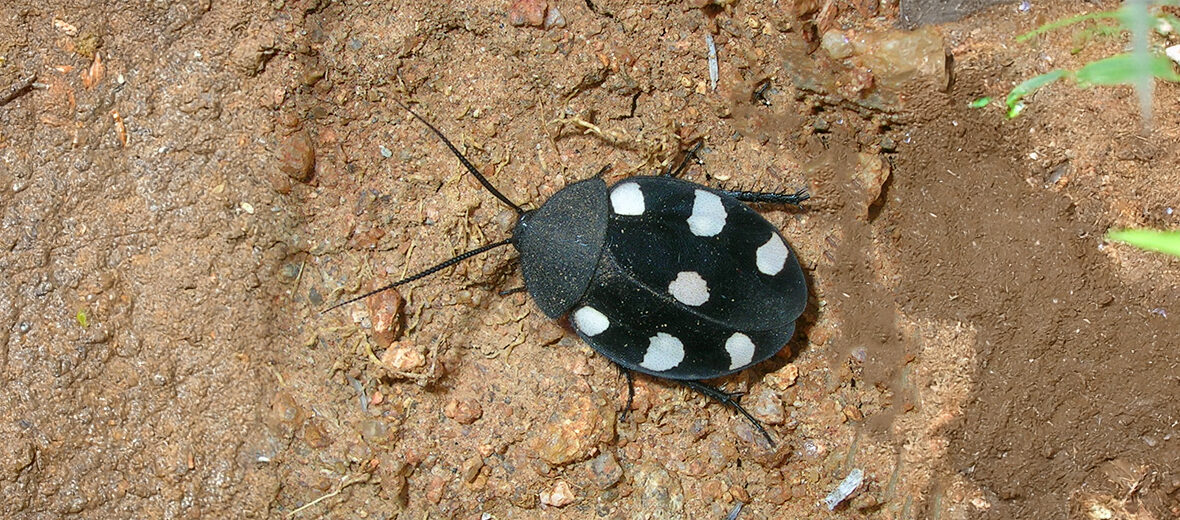
The domino cockroach, aka Indian domino cockroach, desert cockroach, or seven-spotted cockroach, is a species of cockroach found in southern India. These cockroaches spend the daylight hours buried in leaf litter or in loose soil. Due to their abundance and distribution, these insects are not currently evaluated by the IUCN. It is presumed that their population trend is stable or increasing.
First the Stats…
Scientific name: Therea petiveriana
Weight: Up to .004 ounce
Length: Up to 1.18 inch
Lifespan: Up to 9 months
Now on to the Facts!
1.) These cockroaches are crepuscular (active at dawn and dusk).
2.) Their domino-like coloration is believed to have evolved to mimic the pattern of the aggressive ground beetle (Anthia sexguttata) that is equipped with powerful mandibles and the ability to spray a caustic chemical at its opponents.
3.) The epithet is named after James Petiver, who collected specimens from Madras.
4.) When threatened, they raise their wings and evert lateral glands on the 2nd and 3rd abdominal segments.
5.) Their glandular secretions have been found to contain volatile compounds N-3-methylbutylacetamide (MBA) and N-3-methylbutylpropanamide (MBP), comprising up nearly 60% of the volatile fraction. These chemicals seem to create an alarm response.
But wait, there’s more on the domino cockroach!
6.) Just like termites, these cockroaches possess symbiotic bacteria and flagellates in their gut that assist in digestion.
7.) As soon as the female has mated, she will prevent other males from approaching, kicking them away with her hind legs.
Did you know…?
These cockroaches are often kept as pets by exotic invertebrate keepers.
8.) Approximately 13 oothecae (egg cases) are produced by a female over 3 – 40 days.
9.) Each oothecae contains up to 16 eggs.
10.) The larvae can often burrow up to 11.81 inches into the soft soil to avoid desiccation (drying out) from hot days.
Now a Short Domino Cockroach Video!
This video talks about general cockroach facts.
Be sure to share & comment below! Also, check out the Critter Science YouTube channel. Videos added regularly!
Want to suggest a critter for me to write about? Let me know here.
Some source material acquired from: Wikipedia
Photo credit: Shyamal




